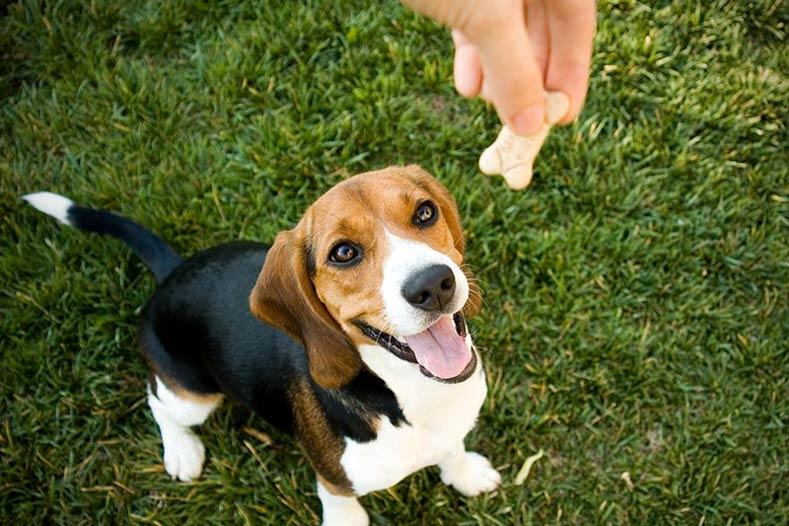When it comes to nurturing a well-behaved and happy canine companion, the approach you choose can make all the difference. Among the various training methods available, reward-based training stands out as both effective and humane. This technique, rooted in positive reinforcement, not only strengthens the bond between you and your furry friend but also encourages your dog to learn and grow in a supportive environment. In this article, we’ll explore the reasons why reward-based training works best for dogs, delving into the science behind it and offering practical tips to help you implement this approach with confidence and warmth. Whether you’re a seasoned dog owner or a first-time pet parent, understanding the benefits of reward-based training can transform your interactions and lead to a more harmonious relationship with your beloved pet.
Understanding Canine Psychology and the Power of Positive Reinforcement
Dogs, much like humans, thrive on positive experiences and interactions. Understanding the intricacies of canine psychology reveals that our furry friends respond best to environments that encourage and celebrate their successes. Positive reinforcement taps into this natural inclination by rewarding desirable behaviors, making the learning process both enjoyable and effective for dogs. This approach not only strengthens the bond between the pet and owner but also fosters a sense of security and trust. When a dog receives a treat, praise, or affection as a reward for good behavior, it learns to associate those actions with positive outcomes, encouraging repetition.
- Encourages Learning: By focusing on what a dog does right, positive reinforcement promotes a more eager and willing attitude towards training.
- Builds Confidence: Dogs become more self-assured when they know they can earn rewards through their actions.
- Strengthens Bond: Consistent rewards help in nurturing a deeper connection and understanding between the dog and its owner.
- Reduces Fear and Anxiety: Unlike punitive methods, positive reinforcement avoids instilling fear, making training sessions more relaxed and productive.
Ultimately, tapping into the natural instincts of dogs through rewarding experiences not only makes training sessions more productive but also enriches the overall relationship between humans and their canine companions.

Building Trust and Strengthening Bonds Through Rewards
At the heart of any successful training program is the bond between you and your dog, and what better way to nurture this bond than through positive reinforcement? Reward-based training not only encourages good behavior but also builds a foundation of trust and mutual respect. Dogs are naturally eager to please, and when they see that their actions lead to positive outcomes, such as treats or praise, they become more motivated to learn and cooperate. This approach fosters a sense of security, as your furry friend learns that you are a source of both guidance and joy.
- Enhances communication and understanding between you and your dog.
- Promotes a positive learning environment.
- Reduces anxiety and stress, creating a happier pet.
- Strengthens your dog’s confidence and willingness to engage.
Incorporating rewards into your training routine transforms each session into an opportunity for growth and bonding. As you celebrate small victories together, your relationship deepens, paving the way for a well-behaved, joyful companion who looks forward to spending time with you.

Practical Tips for Implementing Reward-Based Techniques
Implementing reward-based techniques effectively can transform your dog’s learning experience. Start by identifying rewards that truly motivate your dog, such as treats, toys, or praise. Ensure these rewards are given immediately after the desired behavior to reinforce the connection. Consistency is key, so be patient and maintain a regular training schedule.
- Keep sessions short: Limit training to 5-10 minutes to maintain your dog’s attention and prevent fatigue.
- Use a variety of rewards: Mix up the types of rewards to keep your dog engaged and eager to learn.
- Gradually phase out treats: As your dog becomes more proficient, slowly replace treats with verbal praise or affection.
- Be patient: Remember that each dog learns at their own pace. Celebrate small victories and build on them.
By following these tips, you can create a positive and productive training environment that encourages your dog to learn and thrive.

Avoiding Common Mistakes in Reward-Based Dog Training
In the journey of nurturing a well-behaved canine companion through reward-based training, it’s crucial to sidestep some common pitfalls. Timing is everything. If a reward is given too late, your dog might not associate it with the desired behavior. Always deliver the reward within seconds to ensure your furry friend connects the dots effectively.
Another frequent oversight is inconsistency. Dogs thrive on routine and predictability, so make sure everyone in the household is on the same page with commands and rewards. Inconsistencies can lead to confusion and slow progress. Here are a few tips to keep your training on track:
- Use the same verbal cues and gestures each time.
- Ensure rewards are given only for behaviors you want to reinforce.
- Adjust the value of rewards according to the difficulty of the task.
By being mindful of these aspects, you’ll create a clear and supportive learning environment that helps your dog understand and thrive.

